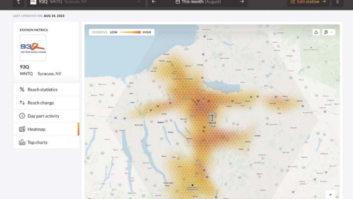Online Audience Measurement
Sep 1, 2010 12:00 AM, By Doug Irwin, CPBE AMD
Anyone familiar with streaming audio knows that Ando Media plays a huge role in audience measurement. I spoke with Robert Favre, the senior vice president of technology for Ando, to gain some insight into how these measurements occur.
Ando uses two different methodologies in collecting audience data. First is the log file method, which is simply the collection of log file data from the CDNs streaming the audio for a particular client station. This log file data includes (on a per-station basis) the start time for each individual user’s stream; the duration of the session; a listener identifier (source IP address); and a geo-location for each source IP. Streaming clients give permission to their CDNs to share all of this data with Ando. The log files are collected daily.
Favre told me the log file method usually gives a somewhat smaller cume number than the listener-tracking method (discussed below). This is because sometimes there are multiple users behind a router providing network address translation to users on a LAN. When this happens, each user will have an identical source IP address — so multiple users are only counted as one (in that case).
The second method Ando uses is listener-tracking. The listener-tracking method utilizes client or server-based code implemented directly on the station player or at the streaming server itself. This code serves as a beacon that sends a message, updated every 60 seconds, about the status of each individual user. The messages are sent to Ando’s cloud-based servers (Amazon’s Elastic Compute Cloud, also known as Amazon EC2). The listener-tracking method also provides more granular detail for every user: device type, stream source, and player type data are available. As I mentioned previously, the listener-tracking method also shows a higher cume per stream, since it counts individual users, as opposed to source IP addresses.
Once all the data is collected and processed, Webcast Metrics (an online service) is updated, and client stations can view reports related to their streams. Updates occur in Webcast Metrics once every 5 minutes.
And finally it is interesting to note that Ando is currently undergoing accreditation by the Media Ratings Council of its collection methods, transformation (which is the conversion of data in metrics) and presentation. Ando expects the MRC to complete accreditation process in October of this year.
Irwin is transmission systems supervisor for Clear Channel NYC and chief engineer of WKTU, New York. Contact him at [email protected].
Streaming Audio Ad Insertion
If you already work with streaming media you know the online audience, while not as large as the over-the-air audience, is growing rapidly….












